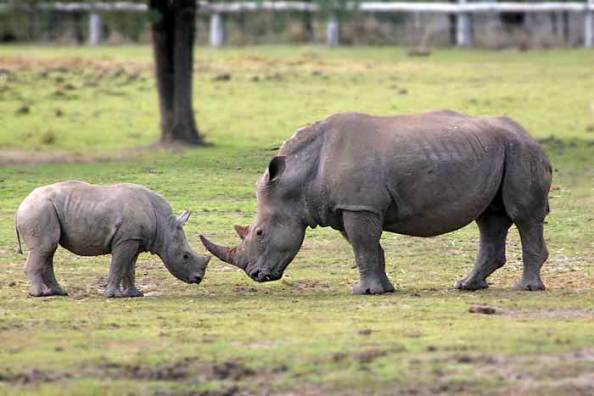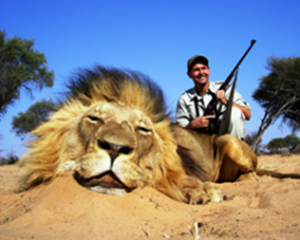A new series of article summaries to help true gentlemen- Monsieurs, get a better handle on things going on globally, culturally and nationally. Consider this a cheat sheet for intellectual conversations.
 In Brief
In Brief
Animal conservation is a morally grey area that few want to tread. Sure, there are those that hunt for a food source but what of game seeking hunters? Paying up to USD100,000 to shoot endangered animals, can that money save others? Do we only understand the economic value of life? What of moral and ethical value?
- Since 2006, more than 5,500 species or 40% of all organisms have been classified endangered by the World Conservation Union.
- Threats to their survival include: habitat destruction, poaching, loss of prey, declining genetic variability, human encroachment, global warming and in some cases government corruption.
- Trade in endangered species has grown with advances in shipping and e-Commerce. Notably, Sumatran tiger parts export to New York for use in traditional Chinese medicine. Ironically, the ban of such sale in China has led to its proliferation internationally.
Animal Conservation: Old solutions. New Problems.
 The public perceives animal conservation as protection through hunting restrictions and wildlife sanctuaries in both public and private game reserves; this was also known as a “fences and fines” solution- Formulated in the 1960s, enforcement mechanisms to keep people away from animals and vice versa.
The public perceives animal conservation as protection through hunting restrictions and wildlife sanctuaries in both public and private game reserves; this was also known as a “fences and fines” solution- Formulated in the 1960s, enforcement mechanisms to keep people away from animals and vice versa.- Like blood diamonds, commercial poaching funded civil wars in Africa and Asia. Trade of horns, pelts and tusks grew with a lack of inadequate management, corruption, greed and in most cases lack of natural resources.
- The primary reason for failure was the result of exclusion of people from the environmental equation: Excluding communities meant resources they originally harvested for centuries like agricultural land, timber and game suddenly became out of bounds removing economic incentives for the locals to protect resources they were deprived of.
- In turn, this led to local governments becoming cash-strapped to keep threatened wildlife protected when there were more pressing concerns for public funds. This problem is particularly acute in developing nations, ironically it is the developed world that places the burden on them.
Sports Hunting: A New Solution?
- Though counter intuitive, sports hunting has created a significant source of revenue that has been used towards the cause of animal conservation.
- Sports hunting by the numbers: Southwest China, a total of USD4 million. Eastern Europe– USD250 million. Trophy hunting of lions, leopards, elephants, buffalo and rhinos have raised USD200million in the African continent. In the Americas, permit auctions for bighorn sheep and waterfowls have raised over USD1.8 Billion since 1937, protecting over 10 million acres of land in the process.
- Sports hunting contributes higher returns on a per capita basis than eco-tourism. The average trophy hunter spends more on licenses, guides, accommodation and supplies than the average eco-tourist; boosting local economies.
- In terms of carbon footprint to economic contribution, hunters are more eco-friendly. one trophy hunter generates 4.17 tonnes of carbon for a round trip from London to Johannesburg. It would take 15 eco-tourists to generate his level of economic contribution, bringing their footprint to 62.55 tonnes.
Challenges and obstacles
- Opposed on many fronts by animal rights groups and scholars. According to Behavioural Ecologist Marc Bekoff of the University of Colorado, “The idea of trophy hunting is a tricky and contentious issue. It’s hard to believe that killing is the best way to conserve. There have to be more humane alternatives.”
- Most conservationists feel that eco-tourism is already sufficient; Generating USD160 Billion worldwide.
- Biologically, hunters kill alpha males creating serious unseen consequences in herd power structures that could further exacerbate the situation.
- Hunting causes unforeseen shifts in the food-chain effecting bio-diversity as well.
- Trade in wildlife still remains uncontrolled in South and Southeast Asia; legalised hunting would adversely affect the markets on animal parts.
- Sport hunting will not control demand of luxury items like turtles and snakes. Example: Massive export from Indonesia to Shanghai’s growing affluent.
- So far, sports hunting has increased the numbers of endangered species but we are still nowhere near levels 40 years ago.
Conclusion
Licensed hunting remains an important source of income and many countries continue to use these to fund conservation. It should perpetuate at least till new developments in conservation occur, in the meantime Convention on International Trade in Endangered Species (CITES) member nations should manage these animals responsibly- the global community must act in tandem to build strong civil societies.
Though this brief has used terms interchangeably, there are UN defined categories for endangered species. They are:
- Extinct: The species has died.
- Extinct in the wild: The species only exists in captivity.
- Critically endangered: Facing extinction in the wild.
- Endangered: A high risk of extinction in the wild.
- Vulnerable: A small population is left and fragmented, extreme vulnerability to human encroachment.
- Near threatened: Close to vulnerability.
- Least concern: Still thriving but vulnerable to unchecked human development.
If you must print this cheat sheet for intellectual conversations, make sure to use recycled paper OR print on both sides of a fresh sheet.
Posted in: the critic

Posted on May 1, 2011
0